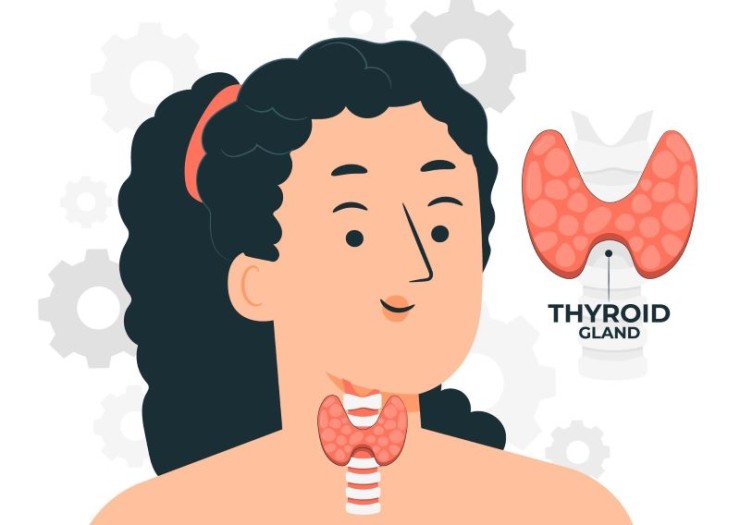
The Parathyroid MIBI Scan, also known as the Parathyroid Sestamibi Scan, is a nuclear imaging technique designed to assess the activity and location of the parathyroid glands.
Parathyroid MIBI (Sestamibi) Scan in India with Cost
Parathyroid MIBI Scan in
Detail: Illuminating Parathyroid Function with Nuclear Precision
In the realm of nuclear medicine, the Parathyroid MIBI (Methoxyisobutylisonitrile) Scan stands as a specialized diagnostic tool, offering precise insights into the function and location of the parathyroid glands. This comprehensive guide aims to unravel the significance, procedure, and applications of the Parathyroid MIBI Scan, providing a thorough understanding of its role in medical imaging.
Introduction
The Parathyroid MIBI Scan, also known as the Parathyroid Sestamibi Scan, is a nuclear imaging technique designed to assess the activity and location of the parathyroid glands. This diagnostic tool plays a crucial role in the evaluation of parathyroid function, aiding in the diagnosis of hyperparathyroidism and guiding surgical interventions.
Understanding Parathyroid MIBI Scan Imaging
Radioactive Tracer Administration:
The process begins with the injection of a small amount of a radioactive tracer, commonly sestamibi, into the bloodstream. This tracer is specifically taken up by the parathyroid glands.
Tracer Uptake and Imaging:
The radioactive tracer is selectively absorbed by overactive parathyroid tissue. A gamma camera then captures images of the tracer distribution, highlighting the activity and location of the parathyroid glands.
Importance in Diagnostic
Imaging
The Parathyroid MIBI Scan holds significant importance in various medical scenarios:
Hyperparathyroidism Diagnosis: Crucial in
identifying overactive parathyroid glands in cases of hyperparathyroidism.
Preoperative Localization: Assisting
surgeons in precisely locating parathyroid glands before surgery.
Preparation for
Parathyroid MIBI Scan
Preparation for a Parathyroid MIBI Scan typically involves:
Fasting: Patients may be required to fast
before the scan for optimal tracer uptake.
Medication Adjustments: Temporary
cessation or adjustment of certain medications that may interfere with the scan.
Procedure: Mapping
Parathyroid Function
Radioactive Tracer Injection: A small amount of
radioactive tracer is injected into the bloodstream.
Tracer Uptake Period: The tracer is
selectively absorbed by overactive parathyroid tissue during a specific waiting
period.
Gamma Camera Imaging: The gamma
camera captures images, displaying the distribution and intensity of the
radioactive tracer, highlighting the activity and location of the parathyroid
glands.
Assessment Areas in
Parathyroid MIBI Scan
The Parathyroid MIBI Scan is employed to assess various aspects of parathyroid function, including:
Hyperparathyroidism Diagnosis: Identifying
overactive parathyroid glands. Parathyroid Localization: Assisting in preoperative planning by precisely locating parathyroid glands.
Benefits of Parathyroid
MIBI Scan
Accurate Diagnosis: Provides accurate localization and diagnosis of
overactive parathyroid glands.
Guidance for Surgery: Assists
surgeons in planning and executing parathyroid surgery with precision.
Minimally Invasive Nature: A non-invasive
procedure that provides valuable information without the need for extensive
surgery.
Risks and Considerations
Parathyroid MIBI Scans involve exposure to low levels of radiation. However, the benefits of accurate parathyroid assessment generally outweigh the associated risks.
Clinical Applications
Parathyroid MIBI Scans find applications in various clinical scenarios, including:
Hyperparathyroidism Management: Diagnosing and
guiding treatment for overactive parathyroid glands.
Preoperative Planning: Assisting
surgeons in locating parathyroid glands before surgery.
Expert Perspectives
Nuclear medicine specialists and endocrine surgeons collaborate to interpret Parathyroid MIBI Scan results, providing expert insights into parathyroid function and potential abnormalities.
Technological Advancements
Continual advancements in imaging technology contribute to the refinement of Parathyroid MIBI Scans, enhancing image resolution and diagnostic capabilities.
Patient Experience
Parathyroid MIBI Scans are generally well-tolerated by patients, involving minimal discomfort during the injection and imaging process. The procedure provides valuable information to healthcare providers without invasive measures.
Conclusion
In conclusion, the Parathyroid MIBI Scan stands as a valuable tool in nuclear medicine, offering precise insights into the function and location of the parathyroid glands. Its applications in hyperparathyroidism diagnosis and preoperative planning contribute to informed decision-making and improved outcomes in parathyroid healthcare.
FAQs (Frequently Asked Questions) About Parathyroid MIBI Scan
Q: What is the primary purpose of a Parathyroid MIBI Scan?
A: The primary purpose of a Parathyroid MIBI Scan is to assess the function and location of the parathyroid glands. It is commonly used to diagnose hyperparathyroidism and assist surgeons in locating overactive parathyroid tissue before surgery.
Q: How is the radioactive tracer used in a Parathyroid MIBI Scan selected?
A: The radioactive tracer used in a Parathyroid MIBI Scan is typically sestamibi. This tracer is chosen for its affinity to parathyroid tissue, allowing for accurate imaging of the parathyroid glands.
Q: Is the Parathyroid MIBI Scan a painful procedure?
A: No, the Parathyroid MIBI Scan is a minimally invasive and generally painless procedure. Patients may experience mild discomfort during the injection of the radioactive tracer, but the imaging itself is well-tolerated.
Q: How long does a Parathyroid MIBI Scan take to complete?
A: The duration of a Parathyroid MIBI Scan varies, but the entire process typically takes a few hours. This includes the waiting period for the radioactive tracer to be absorbed by the parathyroid glands.
Q: Are there any side effects or risks associated with the radioactive tracer used in the Parathyroid MIBI Scan?
A: The radioactive tracer used in the Parathyroid MIBI Scan, sestamibi, is generally well-tolerated with minimal side effects. The exposure to radiation is low, and the benefits of accurate diagnosis usually outweigh any associated risks.
Q: Can a Parathyroid MIBI Scan be performed on pregnant or breastfeeding individuals?
A: It is advisable to inform healthcare providers if you are pregnant or breastfeeding before undergoing a Parathyroid MIBI Scan. The potential risks and benefits will be carefully considered to ensure the safety of both the individual and the baby.
Q: Is there any specific preparation required before a Parathyroid MIBI Scan?
A: Yes, there may be specific preparation instructions provided by the healthcare team. This may include fasting before the scan and temporary cessation or adjustment of certain medications that could interfere with the imaging.
Q: How soon can results from a Parathyroid MIBI Scan be expected?
A: Results from a Parathyroid MIBI Scan are usually available shortly after the imaging procedure. The healthcare provider, often a nuclear medicine specialist, will interpret the results and discuss them with the patient.
Q: Are there alternatives to the Parathyroid MIBI Scan for assessing parathyroid function?
A: While there are other imaging modalities and blood tests to assess parathyroid function, the Parathyroid MIBI Scan is a specialized and effective tool for visualizing the parathyroid glands and guiding surgical interventions.
Q: How frequently is a Parathyroid MIBI Scan recommended for individuals with hyperparathyroidism?
A: The frequency of Parathyroid MIBI Scans depends on the individual's specific medical condition and the recommendations of the healthcare provider. It is usually performed as needed for diagnosis, preoperative planning, or postoperative assessment.
These FAQs aim to provide additional clarity on the Parathyroid MIBI Scan, addressing common questions and concerns that individuals may have about the procedure.
(0)
Login to continue



